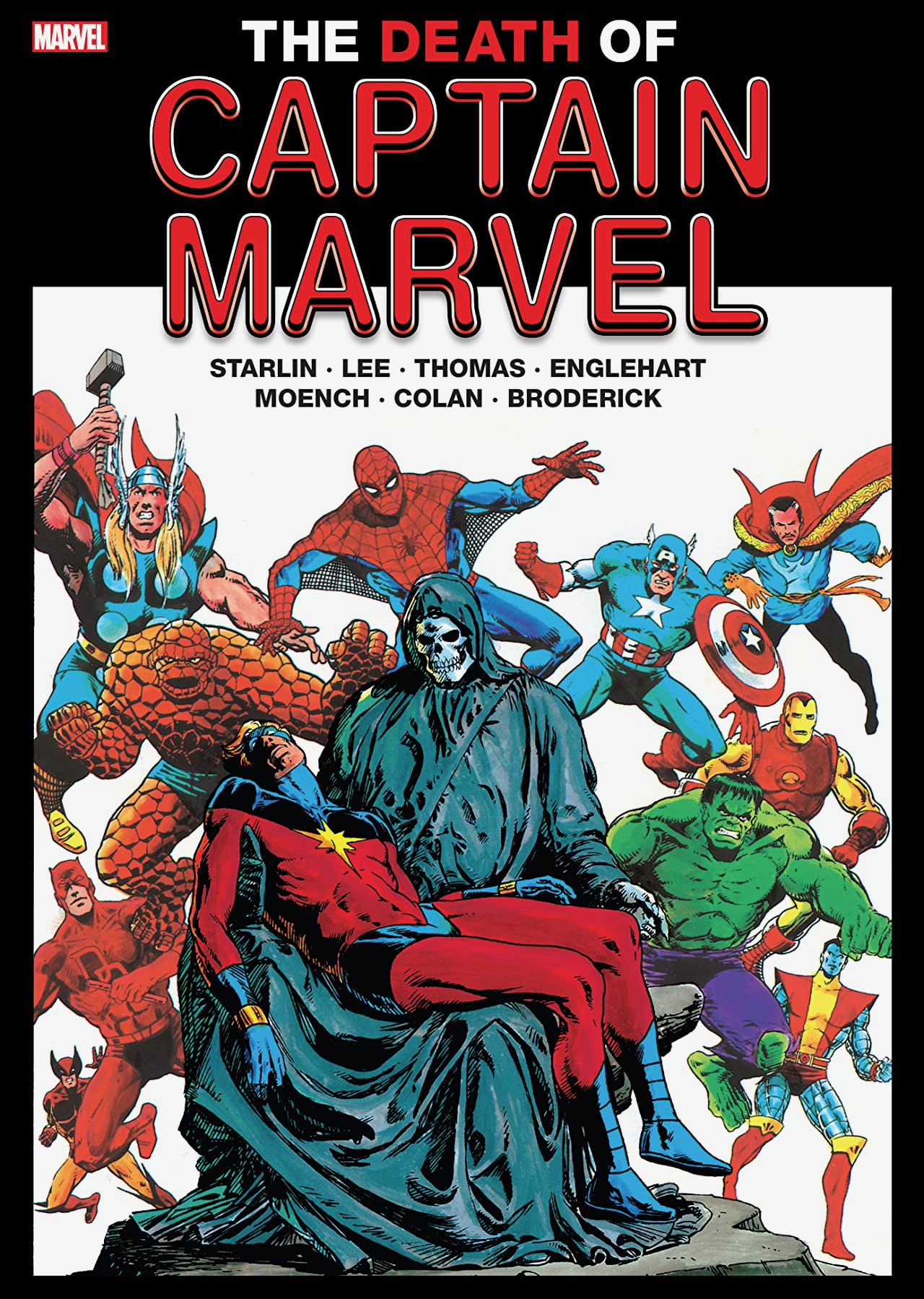
In 1982, Marvel’s business was doing well. Most of their books sold better than even the high-performing books of today, they were recognized as innovators, and they were attracting the best creators. In retrospect, it doesn’t look like a risk to get someone who, at the time, was considered top tier talent and let him do whatever he wants for an oversized, glossy, super-expensive project. But back in 1982, the only companies really doing anything like a graphic novel were manga producers. There weren’t even regular trade paperbacks yet. So, Marvel Graphic Novel #1 was a revolutionary idea.

Mar-Vell is diagnosed with cancer, and suddenly the world’s greatest minds decide to take on the disease. Reed Richards, Hank McCoy, T’Challa, even Stephen Strange.
It was also a bit of a risk to make the book happen in continuity. Sure, newer readers could probably have bought it and figure it out, but it wasn’t written for them. The book was heavy with context, building on various precedent events, and killing a character who everyone knew (even if Captain Marvel’s solo books never sold all that well).
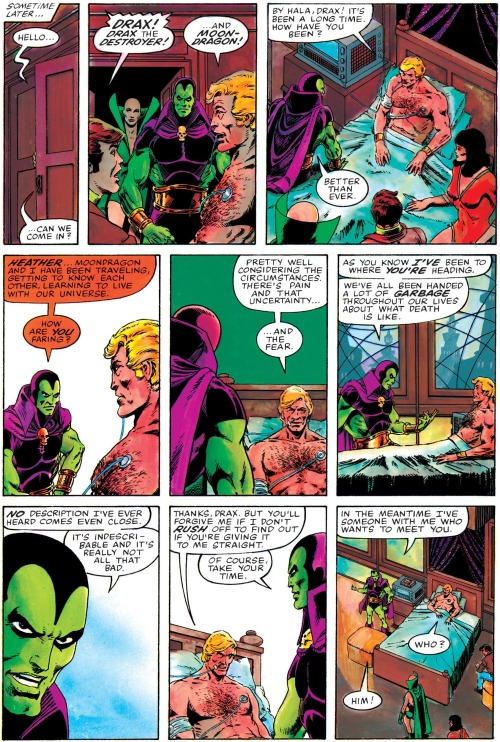
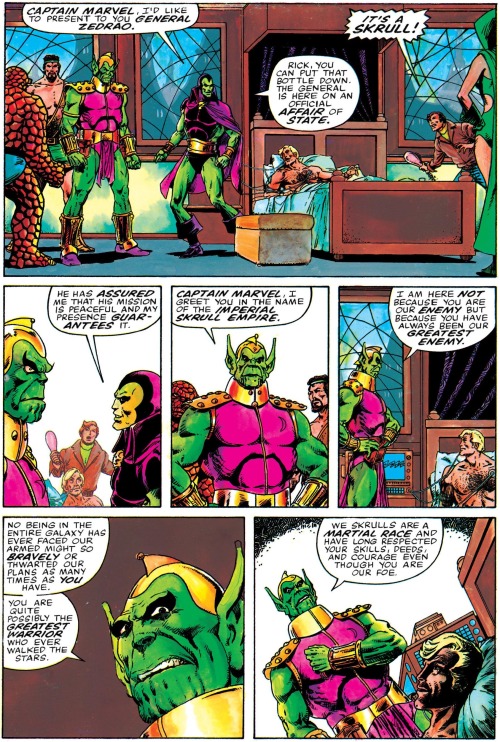
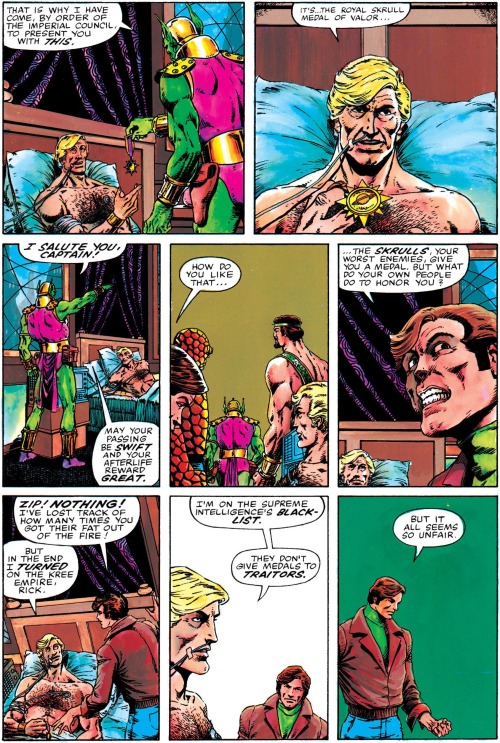
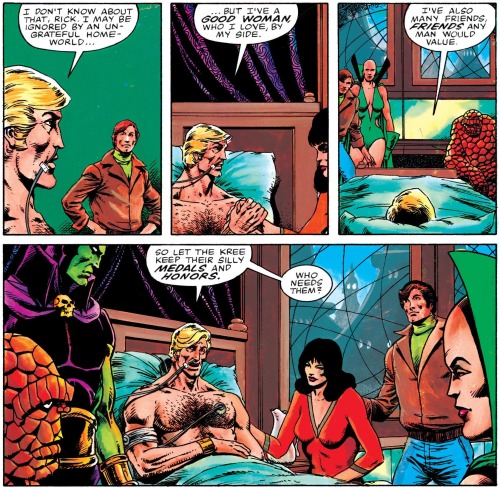
And then to kill him without a big fight, but instead to make the book essentially one long deathbed goodbye to a man stricken with cancer? That was yet another reason this was such a big risk.
Fortunately, it was extremely well-executed. It led to a whole run of graphic novels from both of the big companies, and many independents. In fact, it’s the rare example of a comic with Rick Jones where Rick’s scenes aren’t completely stupid…

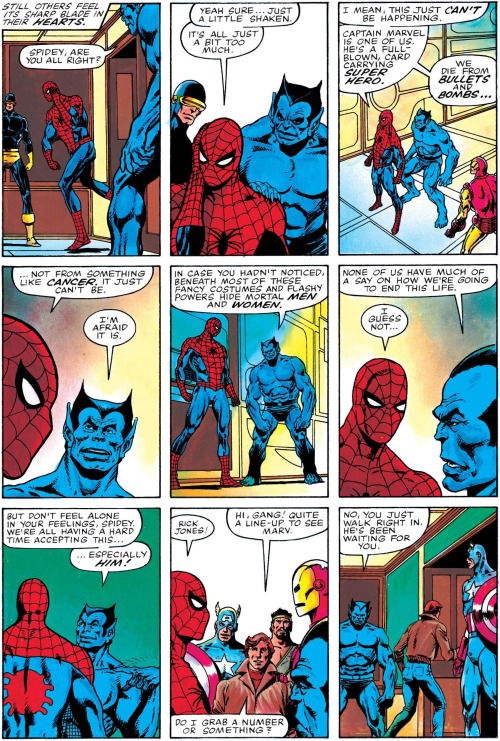
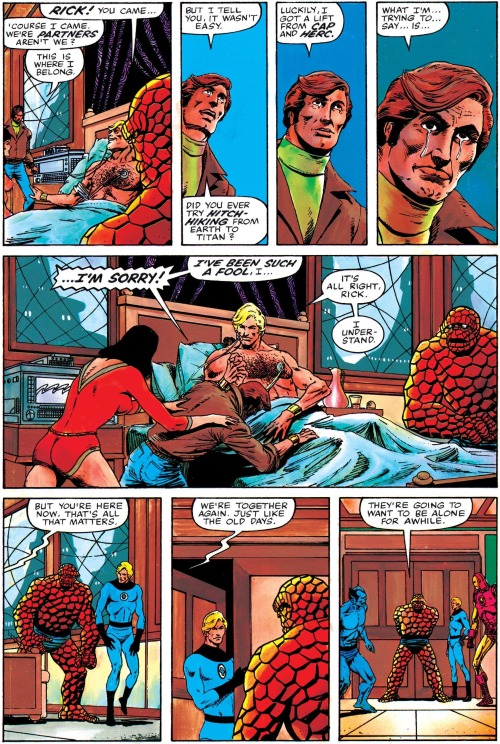
Thanos even joins the party…
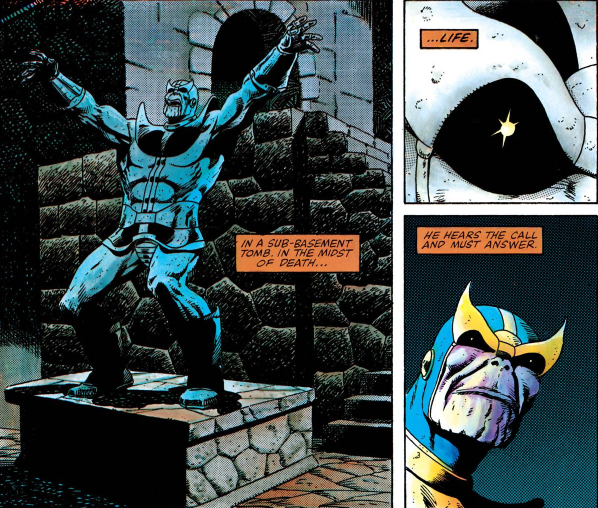
Okay, when we last saw Thanos he was a statue. In “The Death of Captain Marvel,” Marvel’s first original graphic novel and the one that proved that a large-size, long-form comic could not only sell but sell extremely well, we ambiguously see Thanos appear in the bedroom of the dying Captain Marvel.
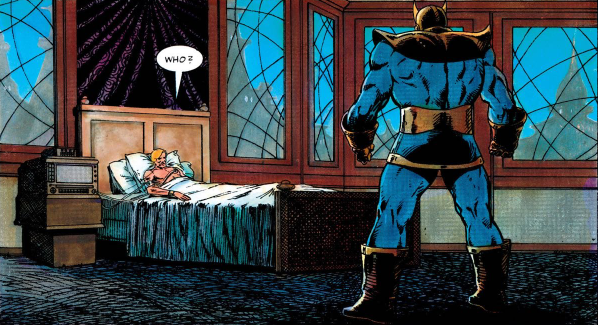
It’s fitting that Thanos, Captain Marvel’s greatest opponent, is there to help him across.
It’s a little strange that they never took this problem on before—and even stranger that they failed. But it’s a nice way for Jim Starlin to write a story about the limits of power, and to inject some real, meaningful loss into the Marvel Universe. And double-kudos to Marvel for not bringing the character back. This was maybe the first Marvel death that had true meaning and impact, both from a narrative perspective and from the sense of the impact of the graphic novel on the industry.
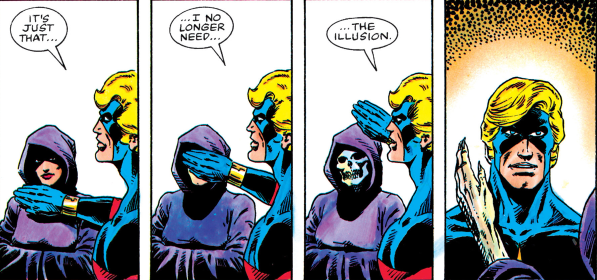
It’s also the first time we see Death’s true face.
This is the best comic Jim Starlin ever created. For the other 9 in the Starlin top 10, go here.
This is one of the 100 best single-issue stories of all time, according to this objectively accurate list.
Finally, it also made my “best of Thanos” list.
Whew!
